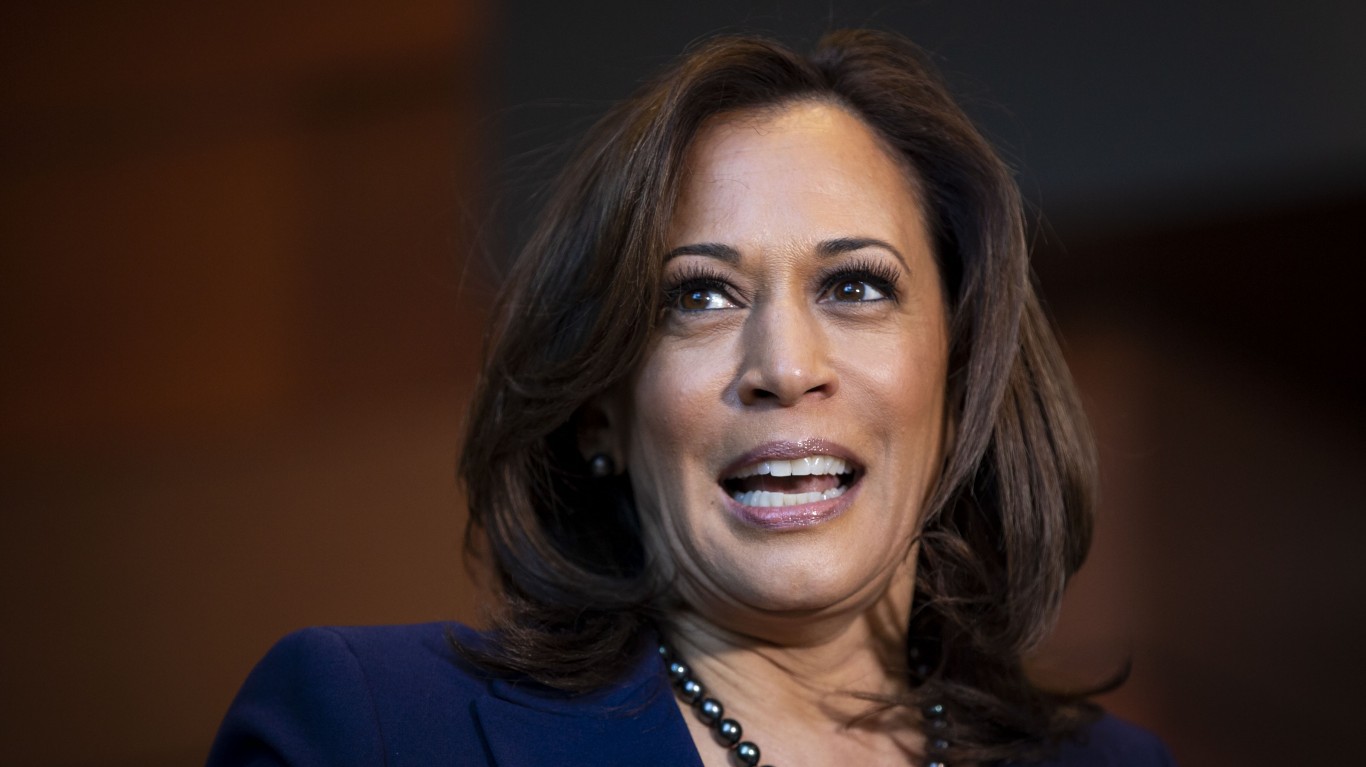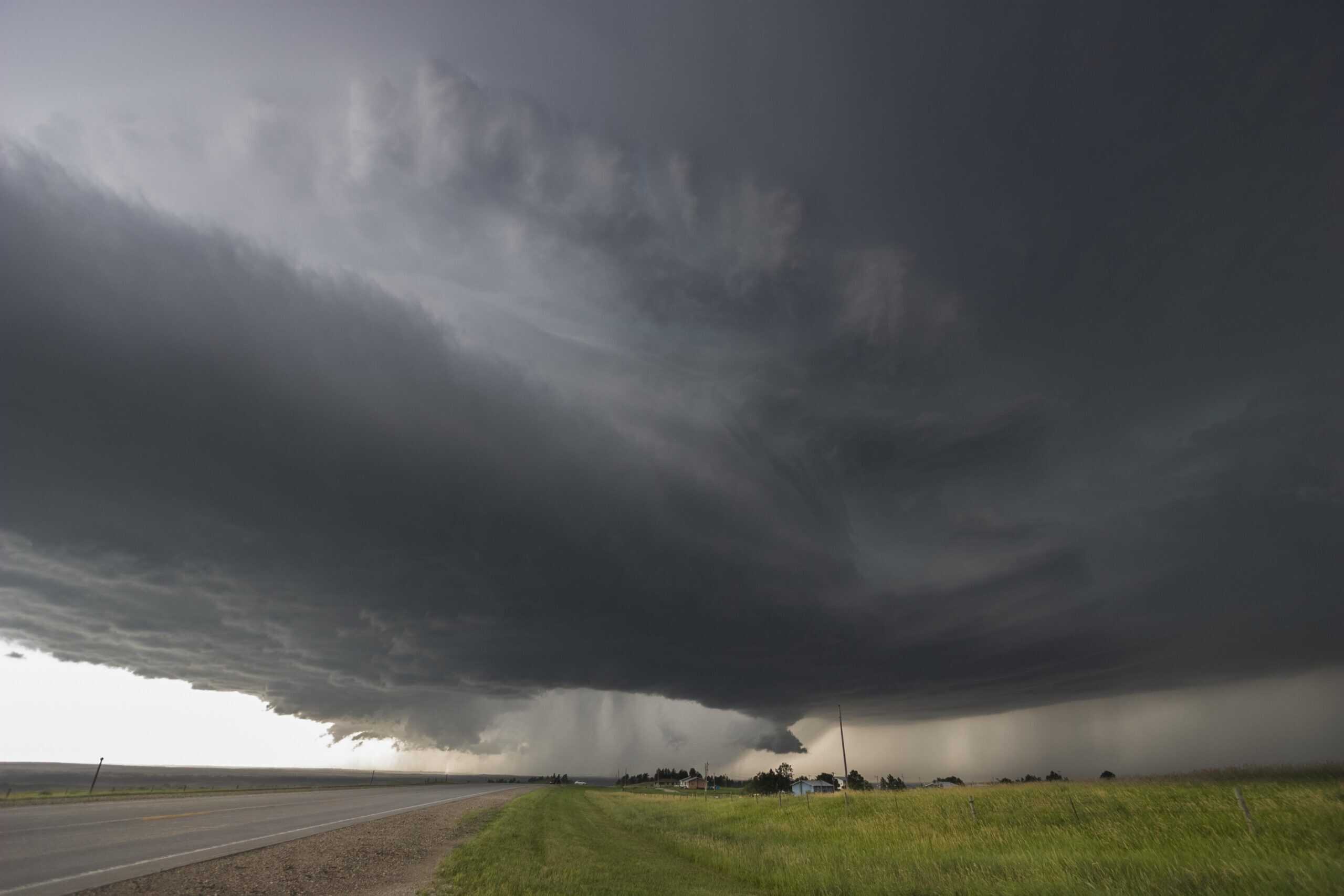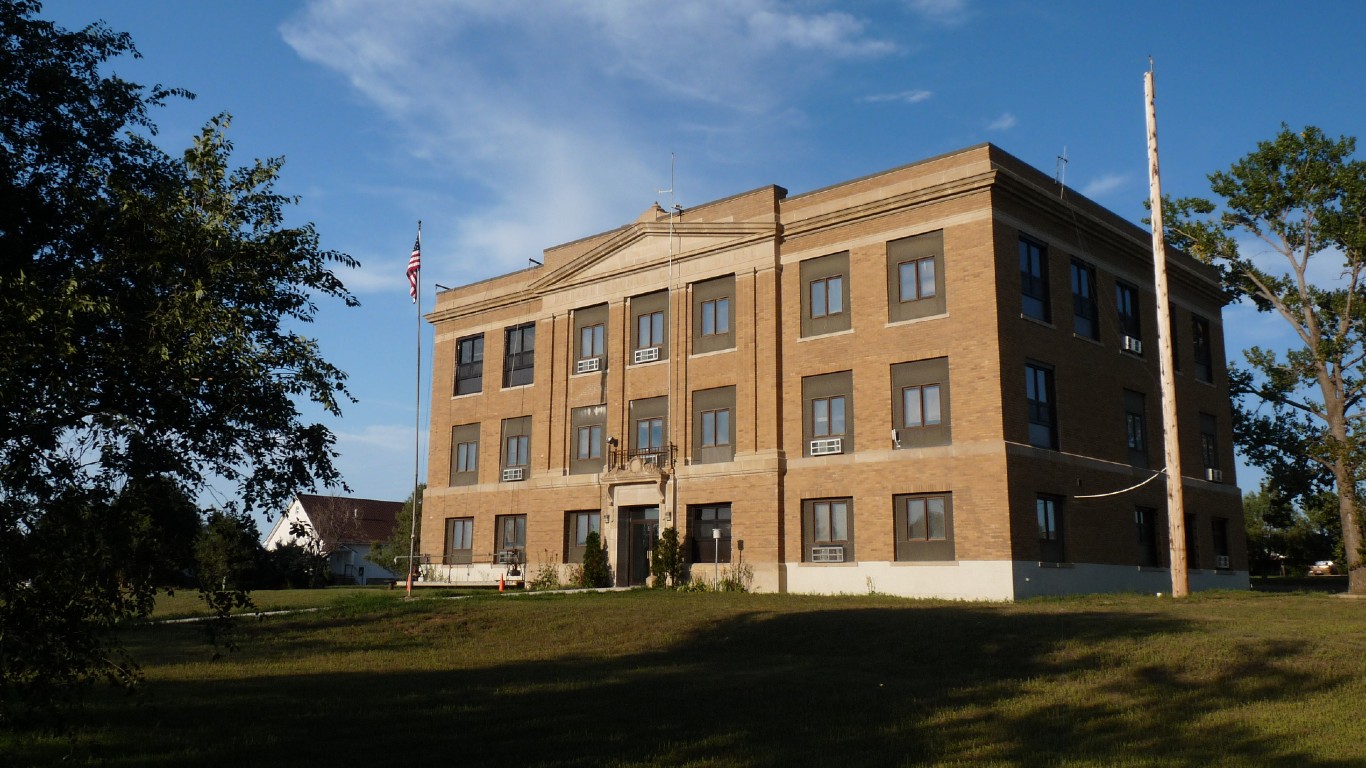
24/7 Wall St. Insights
- This election cycle, Harris and Trump campaigns are focusing their resources on a handful of key swing-states, where the election will likely be decided.
- In most of the rest of the country, including South Dakota, the outcome of the race is effectively predetermined.
- However, South Dakota’s status as a red state is an oversimplification that belies a much more nuanced reality.
- Also: 2 Dividend Legends to Hold Forever
Recent presidential elections have been decided by voters in a handful of closely contested swing states — and 2024 is shaping up to be no different. In seven states this election cycle, both major party candidates are polling so closely that either one has a reasonable chance of winning. (This is how Trump and Harris are polling in every key swing state.)
Unlike these swing states — which are effectively a toss-up – most states are already a virtual lock for one of the two major party candidates. So-called blue states, like Massachusetts and Vermont, are places that Kamala Harris, a Democrat, can reliably count on taking in November. Meanwhile, Donald Trump, the Republican candidate, is expected to handily win red states like Idaho and Wyoming.
These and other non-swing states are often seen as political monoliths, home to populations of like-minded voters with similar values and priorities. This, however, is an oversimplification that belies a much more nuanced reality.
In South Dakota, long considered a red state, an average of 58.7% of voters have supported the Republican candidate across the last four presidential elections. In fact, South Dakota has gone to the GOP candidate in every presidential election since 1964, when Democrat Lyndon Johnson defeated Barry Goldwater, a Republican. Barring any major, unforeseen shakeup, South Dakota is expected to align with historical voting patterns once again in 2024 and go to Trump. (Here is a look at the 15 least popular presidents, according to Millennials.)
Despite its status as a Republican stronghold, there are several parts of the state that have consistently broken with the prevailing political ideology in recent elections. According to voting records, there are six counties in South Dakota where an average of at least 50% of voters have supported the Democratic candidate across the last four presidential elections. In one of these counties, an average of more than 75% of voters cast ballots for the Democratic candidate over the same four general elections.
These are the most Democratic counties in South Dakota. All historical, county-level, voting statistics are from the MIT Election Data and Science Lab’s County Presidential Election Returns 2000-2020 database, as compiled in the Harvard Dataverse, V13.
Why It Matters

Because of the electoral college system, the outcome of presidential elections often comes down to voters in just a handful of closely contested states. In contrast to these battleground states, most of the country has reliably voted either Democratic or Republican in recent presidential elections. These states include South Dakota which is generally expected to go to Trump in 2024. Still, South Dakota is not the partisan monolith it is often perceived to be.
6. Corson County
- Average popular vote split in last 4 presidential elections: 52.3% Democratic; 45.3% Republican
- Popular vote split in 2020 election: 48.5% Democrat (Joe Biden); 50.4% Republican (Donald Trump)
- Popular vote split in 2016 election: 45.5% Democrat (Hillary Clinton); 50.0% Republican (Donald Trump)
- Popular vote split in 2012 election: 54.0% Democrat (Barack Obama); 42.9% Republican (Mitt Romney)
- Popular vote split in 2008 election: 60.2% Democrat (Barack Obama); 38.5% Republican (John McCain)
- County population: 3,906
5. Ziebach County
- Average popular vote split in last 4 presidential elections: 55.1% Democratic; 42.2% Republican
- Popular vote split in 2020 election: 53.1% Democrat (Joe Biden); 44.6% Republican (Donald Trump)
- Popular vote split in 2016 election: 46.0% Democrat (Hillary Clinton); 48.0% Republican (Donald Trump)
- Popular vote split in 2012 election: 57.7% Democrat (Barack Obama); 41.3% Republican (Mitt Romney)
- Popular vote split in 2008 election: 62.8% Democrat (Barack Obama); 35.4% Republican (John McCain)
- County population: 2,455
4. Clay County

- Average popular vote split in last 4 presidential elections: 56.2% Democratic; 40.6% Republican
- Popular vote split in 2020 election: 54.1% Democrat (Joe Biden); 43.1% Republican (Donald Trump)
- Popular vote split in 2016 election: 51.4% Democrat (Hillary Clinton); 41.6% Republican (Donald Trump)
- Popular vote split in 2012 election: 56.5% Democrat (Barack Obama); 41.0% Republican (Mitt Romney)
- Popular vote split in 2008 election: 61.8% Democrat (Barack Obama); 37.3% Republican (John McCain)
- County population: 14,953
3. Dewey County
- Average popular vote split in last 4 presidential elections: 60.1% Democratic; 37.4% Republican
- Popular vote split in 2020 election: 57.5% Democrat (Joe Biden); 40.2% Republican (Donald Trump)
- Popular vote split in 2016 election: 52.0% Democrat (Hillary Clinton); 42.3% Republican (Donald Trump)
- Popular vote split in 2012 election: 63.7% Democrat (Barack Obama); 35.0% Republican (Mitt Romney)
- Popular vote split in 2008 election: 66.2% Democrat (Barack Obama); 32.9% Republican (John McCain)
- County population: 5,275
2. Buffalo County
- Average popular vote split in last 4 presidential elections: 68.7% Democratic; 29.5% Republican
- Popular vote split in 2020 election: 64.1% Democrat (Joe Biden); 33.3% Republican (Donald Trump)
- Popular vote split in 2016 election: 60.4% Democrat (Hillary Clinton); 34.9% Republican (Donald Trump)
- Popular vote split in 2012 election: 73.6% Democrat (Barack Obama); 25.9% Republican (Mitt Romney)
- Popular vote split in 2008 election: 74.2% Democrat (Barack Obama); 25.5% Republican (John McCain)
- County population: 1,859
1. Todd County

- Average popular vote split in last 4 presidential elections: 76.8% Democratic; 20.9% Republican
- Popular vote split in 2020 election: 77.3% Democrat (Joe Biden); 21.0% Republican (Donald Trump)
- Popular vote split in 2016 election: 70.8% Democrat (Hillary Clinton); 22.9% Republican (Donald Trump)
- Popular vote split in 2012 election: 79.1% Democrat (Barack Obama); 19.9% Republican (Mitt Romney)
- Popular vote split in 2008 election: 78.7% Democrat (Barack Obama); 20.3% Republican (John McCain)
- County population: 9,353
It’s Your Money, Your Future—Own It (sponsor)
Retirement can be daunting, but it doesn’t need to be.
Imagine having an expert in your corner to help you with your financial goals. Someone to help you determine if you’re ahead, behind, or right on track. With SmartAsset, that’s not just a dream—it’s reality. This free tool connects you with pre-screened financial advisors who work in your best interests. It’s quick, it’s easy, so take the leap today and start planning smarter!
Don’t waste another minute; get started right here and help your retirement dreams become a retirement reality.
Thank you for reading! Have some feedback for us?
Contact the 24/7 Wall St. editorial team.







